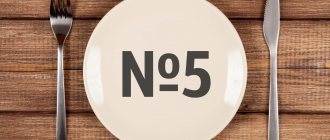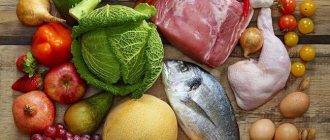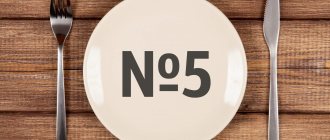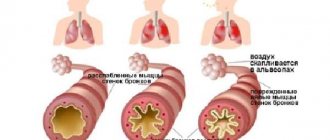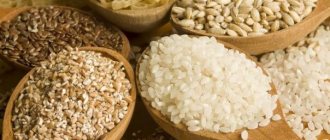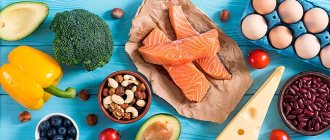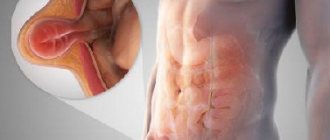General rules
Diet for bronchial asthma is a good adjunct to the treatment and prevention of asthma attacks. The dietary intake is largely determined by the form of bronchial asthma ( infectious-allergic or atonic ). If the patient does not have allergic reactions to food triggers, as a rule, a variant of Diet No. 9 (for patients with bronchial asthma), which is a hypoallergenic diet, is prescribed.
Its main purpose is to reduce the sensitivity of the bronchial apparatus, reduce the intensity of attacks and the severity of allergic-inflammatory processes. The main principle of such a diet is the exclusion from the diet of potentially allergenic foods that have a pronounced sensitizing effect and extractive irritants. In general, this is a physiologically complete diet, but with a limitation of sugars and foods containing them.
The calorie content of the daily diet of patients with bronchial asthma is on average 2400-2700 kcal. The amount of liquid is 1.7-1.8 liters. Meals are divided (4-5 meals). The restriction applies to strong meat, mushroom and fish broths and table salt (up to 10-11 g). Culinary processing of food - leading to denaturation of proteins.
Potentially allergenic foods include: seafood and fish, caviar, goose and duck meat, eggs, nuts, legumes, citrus fruits, tomatoes, melon, peaches, strawberries, raspberries, chocolate and honey, yeast. During periods of exacerbation of bronchial asthma, these products should be excluded from the diet.
easily digestible carbohydrates in the diet , which contribute to the exacerbation of inflammatory processes. The consumption of wheat bread, fatty pork/beef, whole milk, cottage cheese, semolina, and sour cream is also limited.
Particular attention should be paid to products containing large quantities of tyramine and histamine , which are actively involved in the development of allergic reactions. The highest content of these substances is found in products that are manufactured using technologies that include fermentation processes (hard cheese, canned fish, sauerkraut, raw smoked sausage, frankfurters and sausages).
It is also important to limit the consumption of foods that accelerate the absorption of allergens: herbs and spices (onions, peppers, garlic, mustard), carbonated and alcohol-containing drinks, salted fish and vegetables, coffee.
Allergic reactions can be caused not only by products, but also by various chemical additives widely used in the food industry (emulsifiers, dyes, preservatives, flavorings). The most dangerous are salicylates , tartrazine , nitrite , glutamate , sodium benzoate . Therefore, it is important to exclude all canned and processed foods.
To ensure adequate nutrition with this diet, it is recommended to include in the menu:
- products containing animal proteins (lean beef, veal, rabbit meat);
- carbohydrates (potatoes, pearl barley, buckwheat, oatmeal);
- vegetables and fruits containing vitamins and microelements (cabbage, cucumbers, zucchini, pears, apples);
- fats (butter, vegetable oils);
- fermented milk products (kefir, yogurt, fermented baked milk);
- decoction of rose hips, fruit compotes, tea, still mineral water.
aspirin-induced bronchial asthma has some features . In this case, all products containing acetylsalicylic and benzoic acids used as preservatives are excluded. Products containing salicylates include oranges, raspberries, apricots, cherries, cloves, strawberries, blackberries, mint, gooseberries, peaches, and plums.
Salicylates are found in a wide variety of foods, so avoid them selectively based on your sensitivity level. Severe bronchospasm can be caused by the food coloring tartrazine , which is included in ice cream, sweets, pasta, gingerbread, puddings, and colored marshmallows.
Material and methods
The search for published data was carried out in the electronic databases Medline (PubMed) and eLibrary. To search for English-language articles, the keywords “asthma”, “diet”, “obesity” were used; to search for Russian-language articles, the keywords “bronchial asthma”, “diet”, “obesity” were used.
The eligibility of English-language original sources was assessed in several stages: titles, abstracts and full-text articles were reviewed. In addition, an additional search of references from documents was used.
Publications of individual observations, animal studies, and articles that reported preliminary research results or duplicated research results were excluded from the analysis.
Varieties
Elimination diet
In the atonic form of the disease with identified food allergens, an elimination diet is prescribed, in which only foods that reliably cause attacks of bronchial asthma are excluded, and not all foods with “high antigenic potency.” Foods that are known to cause allergic reactions are excluded from the diet. At the same time, not only the products themselves are excluded, but also dishes containing them. For example, if you are intolerant to chicken eggs, exclude mayonnaise, creams, baked goods, casseroles and all dishes that contain eggs in the recipe. Otherwise, nutrition should be physiologically complete, with a stronger limitation of easily digestible carbohydrates.
It is recommended to replace sugar with saccharin , xylitol , and sweetener . Significantly reduce table salt and the consumption of salty foods; it is advisable to increase the content of vegetable oils in the diet. Dishes are prepared stewed, boiled, baked, but not fried. In the atonic form, regular bowel movements are extremely important.
In case of constipation, the diet includes foods and dishes that have a laxative effect. The diet is enriched with foods containing calcium (fermented milk products, cottage cheese), which has an antiallergic effect. When excluding any products from the diet, you should select appropriate equivalent substitutes. For example, replace whole cow's milk with soy milk, fish with legumes and cottage cheese.
Fasting and dietary therapy
A type of diet therapy includes fasting-dietary therapy, prescribed for severe forms of the disease (a combination of drug and polyvalent food allergies, bronchial asthma and obesity , psoriasis and eczema ). It is contraindicated during pregnancy and lactation, active tuberculosis , dysfunction of internal organs, children and the elderly.
Fasting-dietary therapy for asthmatics involves hospitalization of the patient; it is strictly prohibited to carry it out at home and without a doctor’s prescription. However, as an alternative, short courses of fasting can be recommended, which are almost as effective, but less dangerous in terms of associated complications. The duration of such courses is 3–7 days.
Basic principle of diet therapy
The formation of a diet depends on a number of factors, for example, the severity of the disease, the presence of symptoms of food allergies, etc. The main principle is to exclude foods with high antigenic potential from the menu. Theoretically, any of them can cause an allergic reaction, but in practice, citrus fruits, raspberries, strawberries, yeast, chocolate, and protein products most often play this role. It is they who are excluded from the diet whenever possible.
The diet limits the consumption of foods that are “heavy” for the body, such as wheat bread, whole milk, cottage cheese and sour cream, fatty meats and some others.
Authorized Products
The diet must necessarily include first courses prepared in low-fat meat, fish and vegetable broths containing a minimum amount of extractive substances.
For second courses, lean beef, veal or rabbit is used. It is recommended to prepare side dishes for main courses from vegetables, buckwheat, pearl barley or oatmeal, and potatoes. For dressing, it is recommended to use mainly vegetable oils (sunflower, corn, olive) rich in Omega-3 PUFAs.
Preference is given to boiling, stewing or steaming.
Table of permitted products
| Proteins, g | Fats, g | Carbohydrates, g | Calories, kcal | |
Vegetables and greens | ||||
| eggplant | 1,2 | 0,1 | 4,5 | 24 |
| zucchini | 0,6 | 0,3 | 4,6 | 24 |
| cabbage | 1,8 | 0,1 | 4,7 | 27 |
| potato | 2,0 | 0,4 | 18,1 | 80 |
| carrot | 1,3 | 0,1 | 6,9 | 32 |
| cucumbers | 0,8 | 0,1 | 2,8 | 15 |
| beet | 1,5 | 0,1 | 8,8 | 40 |
Fruits | ||||
| pears | 0,4 | 0,3 | 10,9 | 42 |
| plums | 0,8 | 0,3 | 9,6 | 42 |
Cereals and porridges | ||||
| buckwheat | 4,5 | 2,3 | 25,0 | 132 |
| oatmeal | 3,2 | 4,1 | 14,2 | 102 |
| Wheat groats | 11,5 | 1,3 | 62,0 | 316 |
| rice | 6,7 | 0,7 | 78,9 | 344 |
Flour and pasta | ||||
| pasta | 10,4 | 1,1 | 69,7 | 337 |
Bakery products | ||||
| Rye bread | 6,6 | 1,2 | 34,2 | 165 |
| bread with seeds | 10,5 | 10,1 | 43,3 | 302 |
Dairy | ||||
| dairy products | 3,2 | 6,5 | 4,1 | 117 |
Meat products | ||||
| veal | 19,7 | 1,2 | 0,0 | 90 |
Sausages | ||||
| chicken sausages | 10,8 | 22,4 | 4,2 | 259 |
Bird | ||||
| boiled chicken | 25,2 | 7,4 | 0,0 | 170 |
Fish and seafood | ||||
| boiled fish | 17,3 | 5,0 | 0,0 | 116 |
Oils and fats | ||||
| vegetable oil | 0,0 | 99,0 | 0,0 | 899 |
| butter | 0,5 | 82,5 | 0,8 | 748 |
Non-alcoholic drinks | ||||
| green tea | 0,0 | 0,0 | 0,0 | — |
| black tea | 20,0 | 5,1 | 6,9 | 152 |
| * data is per 100 g of product | ||||
Recommended products and dishes of diet table No. 9 for bronchial asthma
Bread: whole grain, bran, diabetic varieties. Soups: any soups with a weak meat broth or a weak poultry broth. Meat dishes: lean beef, veal, as well as turkey, rabbit, boiled or baked in pieces; chicken - with caution, in limited quantities. Fish dishes: low-fat fish, boiled in pieces. Side dishes: any vegetables raw, boiled, baked, stewed are recommended; limit potatoes; cereals in the form of porridges in moderation. Dairy products: with caution if you are not allergic to milk; cottage cheese (fresh or in dishes), fermented milk drinks, cheese. Eggs: limited unless allergic. Snacks: aspic, vegetable salads. Sweet dishes: fresh unsweetened fruits and berries; sugar is excluded, confectionery products are very limited. Drinks: tea with and without milk, rose hip decoction, unsweetened juices, mineral water. Fats: fresh vegetable oil, butter.
Fully or partially limited products
Strict limitation of free, easily digestible carbohydrates - sugar, ice cream, jam, honey, sweets, preserves, confiture), as well as smoked and fried foods and dishes, flour products (pies, cookies, cakes).
Products whose consumption is recommended to be limited for bronchial asthma
Broths made from fatty pork, lamb, and soups seasoned with noodles are excluded.
Complete rejection of hot sauces, canned food, mushrooms, milk, salted fish, spicy and pickled vegetable snacks, and spices.
Complete refusal to drink alcohol-containing drinks (almost all).
Limit the consumption of certain types of fruits and berries - grapes, lemons, oranges, grapefruits, strawberries, raisins, raspberries, bananas, dates, as well as juices made from them.
It is not recommended to consume cocoa, hot chocolate, or coffee.
Table of prohibited products
| Proteins, g | Fats, g | Carbohydrates, g | Calories, kcal | |
Vegetables and greens | ||||
| tomatoes | 0,6 | 0,2 | 4,2 | 20 |
| garlic | 6,5 | 0,5 | 29,9 | 143 |
Fruits | ||||
| citrus fruits | 0,9 | 0,2 | 4,4 | 22 |
| melon | 0,6 | 0,3 | 7,4 | 33 |
Berries | ||||
| strawberry | 0,8 | 0,4 | 7,5 | 41 |
| raspberries | 0,8 | 0,5 | 8,3 | 46 |
Mushrooms | ||||
| mushrooms | 3,5 | 2,0 | 2,5 | 30 |
Nuts and dried fruits | ||||
| nuts | 15,0 | 40,0 | 20,0 | 500 |
Cereals and porridges | ||||
| semolina | 10,3 | 1,0 | 73,3 | 328 |
Bakery products | ||||
| wheat bread | 8,1 | 1,0 | 48,8 | 242 |
Confectionery | ||||
| jam | 0,3 | 0,1 | 56,0 | 238 |
| candies | 4,3 | 19,8 | 67,5 | 453 |
| cookie | 7,5 | 11,8 | 74,9 | 417 |
| cake | 3,8 | 22,6 | 47,0 | 397 |
| jam | 0,4 | 0,2 | 58,6 | 233 |
Cakes | ||||
| cake | 4,4 | 23,4 | 45,2 | 407 |
Chocolate | ||||
| chocolate | 5,4 | 35,3 | 56,5 | 544 |
Raw materials and seasonings | ||||
| seasonings | 7,0 | 1,9 | 26,0 | 149 |
| mayonnaise | 2,4 | 67,0 | 3,9 | 627 |
| honey | 0,8 | 0,0 | 81,5 | 329 |
| vinegar | 0,0 | 0,0 | 5,0 | 20 |
Dairy | ||||
| milk | 3,2 | 3,6 | 4,8 | 64 |
| cream | 2,8 | 20,0 | 3,7 | 205 |
Cheeses and cottage cheese | ||||
| cottage cheese | 17,2 | 5,0 | 1,8 | 121 |
Meat products | ||||
| pork | 16,0 | 21,6 | 0,0 | 259 |
| salo | 2,4 | 89,0 | 0,0 | 797 |
| bacon | 23,0 | 45,0 | 0,0 | 500 |
Sausages | ||||
| smoked sausage | 28,2 | 27,5 | 0,0 | 360 |
Bird | ||||
| duck | 16,5 | 61,2 | 0,0 | 346 |
| goose | 16,1 | 33,3 | 0,0 | 364 |
Eggs | ||||
| chicken eggs | 12,7 | 10,9 | 0,7 | 157 |
Fish and seafood | ||||
| marinated fish | 1,7 | 3,0 | 11,4 | 82 |
| pink salmon | 20,5 | 6,5 | 0,0 | 142 |
| caviar | 36,0 | 10,2 | 0,0 | 123 |
| squid | 21,2 | 2,8 | 2,0 | 122 |
| boiled crabs | 16,0 | 3,6 | 0,0 | 96 |
| shrimps | 22,0 | 1,0 | 0,0 | 97 |
| salmon | 19,8 | 6,3 | 0,0 | 142 |
| seaweed | 0,8 | 5,1 | 0,0 | 49 |
| crayfish | 20,3 | 1,3 | 1,0 | 97 |
| herring | 16,3 | 10,7 | — | 161 |
| mackerel | 18,0 | 13,2 | 0,0 | 191 |
| tuna | 23,0 | 1,0 | — | 101 |
Alcoholic drinks | ||||
| dry red wine | 0,2 | 0,0 | 0,3 | 68 |
| cognac | 0,0 | 0,0 | 0,1 | 239 |
| beer | 0,3 | 0,0 | 4,6 | 42 |
| * data is per 100 g of product | ||||
Menu (Power Mode)
Sample diet menu for patients with bronchial asthma:
First option
| Breakfast |
|
| Snack |
|
| Dinner |
|
| Dinner |
|
| Before bedtime |
|
Second option
| Breakfast |
|
| Snack |
|
| Dinner |
|
| Dinner |
|
| Before bedtime |
|
Third option
| Breakfast |
|
| Snack |
|
| Dinner |
|
| Dinner |
|
| Before bedtime |
|
For children
The diet for bronchial asthma in children is not fundamentally different. Children are also prescribed dietary table 9, however, the calorie content and nutrient intake standards are adjusted in accordance with the age of the developing organism.
The basis of a child’s diet consists of lean meat, fish, fermented milk products, cereals, vegetables and fruits. Any canned food or spices are excluded. Sugar is replaced with sweet fruits, glucose, fructose. It is useful to include enveloping foods in your diet, which reduce the entry of allergens into the body.
Nutrition of children with allergic manifestations is a rather complex issue and a careful approach to the preparation of the diet is required, since restrictions in the child’s diet may not improve, but rather worsen his condition due to insufficient protein, vitamins, carbohydrates or fats in the diet.
In some cases, the cause of an allergy may not be the food itself, but the inability of the child’s body to completely process and absorb it. Often in such cases, children develop allergies as a reaction to this.
The child’s diet should consist exclusively of freshly prepared food from natural products. Over time, as the child grows, some products cease to be allergens for him. Therefore, it is necessary to monitor changes and adjust the diet, but only under the supervision of a pediatrician or allergist.
Introduction
Bronchial asthma (BA) is a chronic inflammatory disease characterized by increased lower airway reactivity, usually leading to reversible airflow limitation [1].
Worldwide, there is an increase in the prevalence of asthma, which is currently registered, according to some estimates, in 300 million people, and by 2025 the number of patients with asthma is expected to increase to 100 million [2]. In the Russian Federation, there is also a tendency to increase the prevalence of asthma [3]. Despite the fact that genetic and environmental factors play a major role in the development of AD, such a rapid increase in the prevalence of the disease cannot be explained by the action of the above factors alone [4]. Studies show a close connection between the increasing prevalence of asthma and environmental changes (urbanization), lifestyle and the development of obesity [5, 6]. Excess caloric intake, nutrient-poor diets, and low levels of physical activity are associated with worse asthma control, decreased quality of life (QoL), and increased health care utilization [7–11]. A key question for clinicians is whether dietary modification can provide benefits to patients with asthma in routine clinical practice and help prevent exacerbations.
The purpose of this work is to summarize the available literature data on the effect of various foods on the course of asthma.
Advantages and disadvantages
| pros | Minuses |
|
|
results
Diet changes for asthma
Nutrition research and clinical guidelines for the prevention and control of chronic diseases are increasingly focusing on healthy eating and lifestyle changes. In relation to cardiovascular pathology, there is evidence regarding changes in dietary patterns [12]. Dietary recommendations for adult patients with asthma are currently in their infancy [13–15].
Nutrition and inflammation in asthma
Systemic inflammation
In patients with asthma, systemic inflammation can be induced by the secretion of proinflammatory cytokines by local inflammatory cells - eosinophils, neutrophils, macrophages and T lymphocytes [16]. Systemic inflammation can occur in asthma, particularly in the neutrophilic inflammatory phenotype [17, 18], and is associated with worse outcomes, including worsening lung function [19], increased exacerbation rates [20, 21], and increased airway inflammation [17, 21]. 22]. Diet influences systemic inflammation. The so-called Western diet is believed to promote a pro-inflammatory environment due to factors such as a lack of antioxidants, which increases the body's sensitivity to oxidative stress, and an excess of saturated fatty acids, which can lead to activation of the innate immune system through activation of the Toll-like receptor. 4 (TLR4), which stimulates the NFκB inflammatory cascade [23, 24]. The Mediterranean diet promotes an anti-inflammatory environment [25, 26] by containing nutrients with anti-inflammatory effects, such as polyunsaturated fatty acids (PUFAs), monounsaturated fatty acids, omega-3 PUFAs, and antioxidants [25, 26]. These anti-inflammatory effects were confirmed in a recent meta-analysis demonstrating significant reductions in C-reactive protein (CRP), IL-6, and intercellular adhesion molecule-1 (ICAM-1) in healthy individuals following a Mediterranean diet [27].
Airway inflammation
Chronic airway inflammation is a key component of asthma [28], which can be influenced by dietary modification [29–33]. Eating high-fat foods, a common feature of the Western diet, may contribute to increased airway inflammation. Consumption of a mixed meal high in fat causes an increase in the level of neutrophils in sputum 4 hours after a meal in patients with asthma [29]; There is also an upregulation of various genes involved in “immune system processes” such as TLR4, indicating increased inflammation in the airways [33]. Reducing dietary intake of saturated fatty acids is associated with a decrease in neutrophilic airway inflammation in patients with asthma [34]. In adult patients with severe asthma, higher dietary fat and lower fiber intake are associated with increased eosinophilic airway inflammation [31]. On the contrary, eating fruits and vegetables due to the antioxidants they contain can lead to a decrease in the intensity of airway inflammation [30, 32]. Dietary intake of fruits and vegetables shows an inverse correlation with IL-8 levels in nasal lavage fluid in children with asthma [32]. In adult patients with asthma, consumption of tomato juice containing a high concentration of the antioxidant lycopene led to a decrease in the influx of neutrophils into the tissues of the respiratory tract, as well as a decrease in the activity of neutrophil elastase in sputum after 7 days [30]. The relationship between systemic inflammation and diet-induced airway inflammation remains unclear.
Nutrition and symptom control in asthma
According to the Global Initiative on Asthma (GINA), symptom control in asthma is divided into two areas—symptom control and the risk of future adverse outcomes (such as exacerbations or worsening pulmonary function) [35]. In addition to traditional approaches to asthma pharmacotherapy, lifestyle modification (including increasing physical activity, avoiding exposure to allergens, and quitting smoking) is recommended to improve disease control. According to the GINA report, a healthy diet high in fruits and vegetables is recommended for patients with AD due to its overall health benefits [35]. However, research suggests that diet, in addition to overall health benefits, may play a role in improving the course of the disease.
Fruits and vegetables
A case-control study [36] demonstrated that high adherence to a traditional Mediterranean diet increased the likelihood of good asthma control. A randomized clinical trial (RCT) [37], which included 38 patients, did not find a significant effect of multiple consultations with a nutritionist on the course of asthma, despite increased adherence to the Mediterranean diet. On the other hand, eating large quantities of raw vegetables (more than 5 units per week) and fruits (especially citrus fruits) is associated with more effective control of AD [38, 39]. As shown by the results of an RCT [40], patients' consumption of large amounts of fruits and vegetables (more than 5 servings of vegetables and 2 servings of fruit per day for 14 weeks) was associated with a lower number of exacerbations and improved asthma control, compared with a group with low consumption of fruits and vegetables (less than 5 servings of vegetables and 2 servings of fruit per day). Thus, modern research indicates that eating fruits and vegetables may have a positive effect on the course of asthma in adult patients. It is advisable to recommend that patients with asthma increase the content of fruits and vegetables in their diet.
Vitamins and dietary supplements
Currently, there is insufficient data demonstrating the benefits of individual antioxidants on AD. Although folate deficiency appears to be associated with a significant increase in the number of episodes of dyspnea in adult patients [41], the effect of folate supplementation on asthma control remains unknown. RCTs have not demonstrated a significant effect of dietary supplementation with vitamins C, D, or E [42, 43], despite positive effects on other outcome measures in asthma. In an open-label study, a combination of vitamins A, B6, C and E, fish oil, calcium, zinc and selenium resulted in improved asthma control and health-related QoL at the end of the study period [44]. Taking fish oil did not have a significant effect on asthma control in adult patients [45]. At the same time, taking the drug EFF1009 (a medicinal food emulsion containing glycoprotein L and eicosapantaenoic acid) was associated with improved quality of life and asthma control, as well as a decrease in the consumption of drugs for emergency relief of symptoms [46, 47].
Western diet
Numerous studies demonstrate that the Western diet has an adverse effect on AD [48–50]. Frequent consumption of pizza/savory pies, desserts and salted meats is associated with an increased risk of frequent exacerbations of asthma (OR 1.79, 95% CI 1.11–3.73) [48]. A prospective study conducted in France showed an association of salted meat consumption with worsening asthma symptoms [49]. An association has also been found between rate of food intake and dyspnea [50].
Diet and lung function in patients with asthma
Fruits and vegetables
The Mediterranean diet has a positive effect on lung function in adult patients with asthma [32, 36, 37, 51]. In an RCT of adult patients with asthma, eating large quantities of fruits and vegetables (more than 5 servings) for 14 days led to improvements in forced inspiratory volume in 1 second (FEV1) and forced vital capacity (FVC), while in patients who consumed vegetables and fruits in smaller quantities, no changes in these indicators were noted [40]. A cross-sectional study found that the diet of adult patients with severe asthma contained less fiber than healthy volunteers, which was associated with decreased lung function [31]. Another cross-sectional study found that soy genistein had a positive effect on lung function [52], although soy isoflavone supplementation had no effect in an RCT [53].
Vitamins
Vitamin B supplementation had no effect on lung function in patients with asthma [41]. A meta-analysis of observational studies showed a very weak positive effect of vitamin C supplements on FEV1 in adult patients with asthma [54]. In both adults and children with asthma, vitamin D supplementation had no beneficial effect on lung function.
Meat
Eating red meat is associated with a pro-inflammatory status. The biological mechanisms that explain the relationship between red meat consumption and high risk of inflammation are not fully understood [55], and research on this topic is inconsistent [56].
In a European study, eating large quantities of meat and potatoes had no effect on pulmonary function in adult patients with asthma [57]. At the same time, a single high-fat meal had a negative effect on FEV1 after taking bronchodilators in adult patients with asthma [29].
Results of randomized controlled trials
Currently, 3 pilot RCTs have been conducted to evaluate the effect of diet on the course of asthma in adults (see table) . L. Wood et al. [40] compared diets with high and low antioxidant content for 14 days in adult patients with stable asthma, then participants received placebo or tomato extract for 14 weeks. Despite methodological limitations (short duration and high attrition rate of 42%), the study is the first to demonstrate that a low antioxidant diet can reduce FEV1 (p=0.01) and FVC (p=0.02), and also increases the risk of exacerbation of asthma by 2.26 times. The authors concluded that comprehensive dietary modification with the addition of vegetables and fruits is more important for the control of AD than the isolated introduction of antioxidants into the diet [40].
Results of RCTs studying the effect of diet on the course of asthma
| Author, year | A country | Groups | Duration of observation | Result | ||
| associated with asthma | associated with lifestyle | associated with the mechanism | ||||
| L. Wood et al. (2012) [40] | Australia | Groups of high and low content of antioxidants (AO) in products. Subsequently, placebo and tomato extract were prescribed, respectively (n=46 and 91) | 14 weeks | Change in time to the first exacerbation on the background of a diet with a high content of AO and a low content of AO (p<0.05). Change in the frequency of asthma exacerbations by 19.6% on the background of a diet with a high content of AO compared to 27.5% on the background of a diet with a low content of AO; on the background of a diet with a low content of AO, the risk of exacerbation was 2.26 times higher than on the background of a diet with a high content of AO. Change in ACQ score on a high-AO diet (–0.1) versus a low-AO diet (0.00) | No data | No statistically significant changes in the content of neutrophils in sputum (%). Decrease in FEV1 on the background of a diet with low AO content after 14 days compared to the initial level (p<0.05). No statistically significant differences in outcomes when eating tomatoes |
| P. Sexton et al. (2013) [37] | New Zealand | Active intervention (HI): adherence to a Mediterranean diet, 5 sessions with a nutritionist (n=11). Moderate intervention (LI): adherence to the Mediterranean diet, 1 session with a nutritionist (n=11). Control group - no intervention (n=12) | 12 weeks | Clinically significant change (MCID ≥0.5) in the AQLQ for symptoms (0.55), emotions (0.69) and environmental factors (0.64) in the HI group and environmental factors (0.71) in the group LI | The mean change in adherence to the Mediterranean diet was 6.62 (1.11) in the HI group compared with 0.44 (1.11) in the control group (p<0.001) | No significant improvement in FEV1 and FVC |
| J. Ma et al. (2016) [58] | USA | Main group: DASH diet (n=46). Control group - no intervention (n=44) | 6 months | Change in mean ACQ score in the DASH group –0.2 points (95% CI –0.5–0.1). Change in mean AQLQ score in the DASH group. Overall mean score 0.4 (95% CI 0.0–0.8). Average score for individual sections: symptoms 0.5 (95% CI 0.0–0.9), environmental factors 0.4 (95% CI –0.1–1.0), emotions 0.4 (95% CI –0.2–0.9) and activity 0.3 (95% CI 0.0–0.7) | The change in mean DASH score in the DASH group was 0.8 (95% CI 0.2–1.5). Change in mean weight –0.1 kg (95% CI –1.8–1.5) | No significant improvement in FEV1 and FVC |
Note. AO - antioxidant; CI—confidence interval; FEV1—forced inspiratory volume in 1 second; FVC - forced vital capacity.
P. Sexton et al. [37] conducted a study of the implementation of a dietitian-supervised Mediterranean diet compared with a control group in a sample of 38 adult patients with AD. Clinically significant changes (MCID ≥0.5) were identified in several subdomains of the QOL questionnaire in patients following the prescribed diet (symptoms, emotional state, environmental factors), but the resulting differences between interventions did not reach statistical significance [37].
J. Ma et al. [58] studied a behavioral intervention aimed at adherence to the DASH diet for 6 months in patients with uncontrolled persistent asthma. This pilot RCT, designed for weight management, produced significant improvements in diet quality (net increase in DASH score of 0.8 points), asthma control (net decrease in ACQ score of 0.2 points), and asthma-related QOL (net increase in total score). according to AQLQ by 0.4 points) compared to the traditional approach [58]. The findings suggest that interventions aimed at improving diet and nutrition may have therapeutic benefits in adult patients with uncontrolled asthma.
Nutrition and effectiveness of bronchodilators
Dietary quality may influence asthma control by improving physiological response to drugs and activating metabolic effects. A high-fat diet reduces the response to bronchodilators in patients with asthma [29]. The underlying mechanisms are unknown, but this effect may be due to increased inflammation in the airways after ingestion of a fat-rich meal [29]. Regardless of the cellular mechanism, previous studies indicate that dietary changes (reducing dietary fat) may sensitize the body to β-agonist drugs. Activation of metabolic effects is associated with the release of short-chain fatty acids (SCFAs) into the bloodstream. SCFAs promote the formation of dendritic cells during hematopoiesis and impair the ability to stimulate Th2 effector cells, suppressing allergic inflammation in a mouse model of AD [59]. In addition, SCFAs reduce the response of allergic effector T lymphocytes, promote the formation of regulatory T lymphocytes [60, 61] and reduce NFκB activation in macrophages [62]. Findings from these studies link diet quality to SCFAs and changes in innate and acquired immune responses. These data suggest an important relationship between dietary patterns and AD.
Reviews and results
Following a diet for bronchial asthma reduces inflammation in the bronchi, reduces bronchospasm, stabilizes mast cell membranes, removes foods that contribute to the development of attacks from the diet, which has a beneficial effect on the general condition of patients, as evidenced by patient reviews:
- “... I have been an asthmatic for over 20 years. I’m already used to going on a diet at the first sign of an attack. At first I considered diet to be something secondary, but over time I realized that it was the most important part of treatment”;
- “... For a long time I treated asthma with the traditional method, but then, on the advice of friends, I went to the clinic. A clearly prescribed diet, combined with dosed physical activity and breathing according to the author’s method, allowed me to significantly reduce the severity and frequency of attacks, and reduce the use of medications.”

